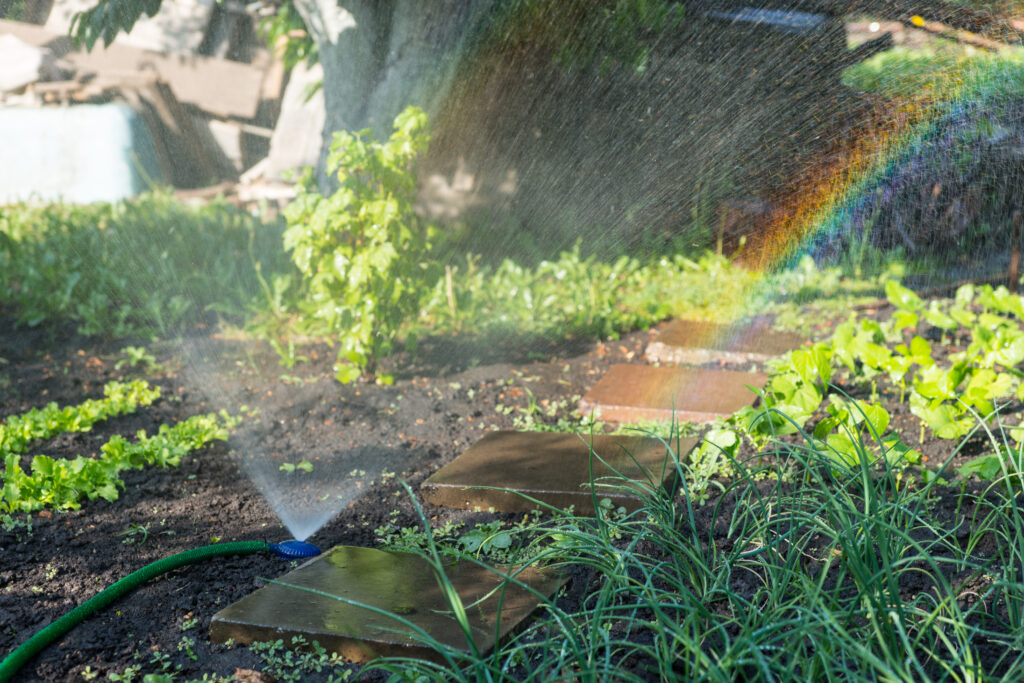Welcome to a world where sustainable living and eco-friendly trends have become more than just buzzwords. It’s a lifestyle that not only benefits the environment but also enhances our overall well-being. In today’s fast-paced world, it’s crucial to take a step back and reflect on the impact of our actions. By embracing sustainable practices in our everyday lives, we can make a positive difference for future generations.
Sustainable living encompasses a range of practices that aim to reduce our ecological footprint and promote long-term environmental preservation. From adopting eco-friendly home practices to making conscious consumer choices, there are countless ways to incorporate sustainability into our daily routines.
In this article, we will explore the concept of sustainable living and the importance of embracing eco-friendly trends. We will delve into various aspects of everyday life, such as home practices, transportation, food choices, travel, fashion, gardening, and building sustainable communities. By the end, you’ll be equipped with practical tips and inspiration to embark on your sustainable living journey.
Key Takeaways:
- Sustainable living is a lifestyle that promotes environmental preservation and reduces our ecological footprint.
- By adopting eco-friendly practices in our everyday lives, we can make a positive impact on both the planet and our well-being.
- Eco-friendly trends can be incorporated into various aspects of everyday life, including home practices, transportation, food choices, travel, fashion, gardening, and community building.
- Small changes in our daily routines, such as conserving energy, choosing sustainable products, and supporting ethical brands, can contribute to a more sustainable future.
- Inspiring others to embrace sustainable living is key to creating a greener and more resilient world for future generations.
What is Sustainable Living?
Sustainable living is a lifestyle choice that aims to minimize our negative impact on the environment while promoting the well-being of present and future generations. It involves adopting practices that support ecological balance, reduce waste, conserve natural resources, and prioritize the health of our planet.
At its core, sustainable living is a mindset that recognizes the interconnectedness of all living beings and the finite nature of our planet’s resources. It encourages us to make conscious choices in our everyday lives that align with principles of environmental stewardship and social responsibility.
In a world facing significant environmental challenges, embracing sustainable living is more important than ever. By adopting sustainable practices, we can help mitigate climate change, protect biodiversity, preserve ecosystems, and create a more sustainable future for ourselves and generations to come.
“Sustainable living is not just about individual actions; it’s about being part of a global movement towards a more sustainable and equitable world.” – Jane Goodall
Benefits of Sustainable Living
Embracing sustainable living not only contributes to a greener and healthier planet, but it also offers a multitude of benefits for individuals, communities, and future generations. From reducing our carbon footprint to improving our overall well-being, here are some key advantages of sustainable living:
- Reduced Carbon Footprint: By adopting eco-friendly practices, such as conserving energy, reducing waste, and using renewable resources, we can significantly lower our carbon emissions and mitigate the impact of climate change.
- Improved Health: Sustainable living promotes a healthier lifestyle by encouraging the consumption of organic and locally sourced foods, reducing exposure to harmful chemicals, and fostering physical activity through alternative transportation methods like walking or cycling.
- Financial Savings: Sustainable choices often lead to long-term financial benefits. For example, energy-efficient appliances and renewable energy sources can lower utility bills, while embracing minimalism and conscious consumption can prevent unnecessary expenses.
- Resilient Planet: Sustainable living practices contribute to the preservation and restoration of natural resources, biodiversity, and ecosystems. This helps create a more resilient planet capable of withstanding environmental challenges.
Embracing sustainable living is not only about making individual changes; it’s also about creating systemic shifts that benefit both people and the planet. By incorporating sustainable practices into our daily lives, we can pave the way for a more sustainable and harmonious future.
“Sustainable living not only benefits our own lives but also the lives of future generations. By making conscious choices today, we can create a better tomorrow for all.”
Inspired by leading experts and organizations dedicated to environmental sustainability, the table below highlights the tangible benefits of sustainable living:
| Benefits of Sustainable Living | Description |
|---|---|
| Reduced Carbon Footprint | Lowering greenhouse gas emissions to combat climate change and preserve the environment. |
| Improved Health and Well-being | Promoting a healthier lifestyle through sustainable food choices, a reduction in exposure to toxins, and active transportation. |
| Financial Savings | Saving money through energy efficiency, conscious consumption, and sustainable investment choices. |
| Enhanced Resilience | Building a more resilient planet capable of adapting to environmental challenges and protecting biodiversity. |
Eco-Friendly Home Practices
Creating an eco-friendly home doesn’t have to be complicated or expensive. By incorporating simple practices into your daily routine, you can make a significant impact on reducing your carbon footprint and creating a more sustainable living environment.
Energy Conservation
Reducing energy consumption is crucial for eco-friendly living. Implement these energy-saving practices in your home:
- Switch to energy-efficient LED light bulbs
- Use natural light whenever possible
- Turn off lights and appliances when not in use
- Unplug electronics and appliances when not in use
- Install smart thermostats to optimize heating and cooling
Waste Reduction
Minimizing waste is another essential component of eco-friendly living. Here are some waste reduction practices you can adopt:
- Recycle paper, plastic, glass, and metal
- Compost food scraps and yard waste
- Avoid single-use items like plastic water bottles and shopping bags
- Opt for reusable products, such as cloth napkins and shopping bags
- Donate or repurpose items instead of throwing them away
Water Conservation
Preserving water is crucial for sustainable living, especially in regions prone to water scarcity. Make a difference with these water conservation practices:
- Fix leaks and drips promptly
- Take shorter showers and install water-saving showerheads
- Water plants and lawns in the early morning or late evening to minimize evaporation
- Collect rainwater for irrigation purposes
- Install low-flow toilets and faucets to reduce water usage
Sustainable Home Design
When designing or renovating your home, consider sustainable alternatives that promote energy efficiency and use environmentally friendly materials:
- Insulate your home properly to reduce heating and cooling needs
- Install energy-efficient windows and doors
- Choose eco-friendly building materials, such as bamboo flooring or recycled glass countertops
- Utilize natural ventilation and design your home to maximize natural light
- Consider installing solar panels or other renewable energy systems
By implementing these eco-friendly home practices, you can create a more sustainable living environment while reducing your impact on the planet.
Sustainable Transportation Solutions
When it comes to embracing sustainable living, one area that often goes overlooked is transportation. Yet, our daily commuting choices have a significant impact on the environment. By opting for sustainable transportation solutions, we can reduce our carbon footprint, improve air quality, and contribute to a greener planet.
There are several sustainable transportation options that we can incorporate into our everyday lives:
- Walking: Walking is not only good for our health but also the environment. It produces zero emissions and helps reduce traffic congestion.
- Cycling: Cycling is another eco-friendly mode of transportation that promotes physical fitness and reduces greenhouse gas emissions.
- Public Transportation: Utilizing public transportation systems, such as buses and trains, significantly reduces the number of vehicles on the road, resulting in lower emissions.
- Carpooling: Sharing rides with others through carpooling helps minimize traffic congestion, saves money on fuel costs, and reduces carbon emissions.
- Electric Vehicles: Electric vehicles (EVs) are a sustainable alternative to traditional gas-powered cars. They produce zero tailpipe emissions and can be charged using renewable energy sources.
By opting for these sustainable transportation solutions, we can contribute to a cleaner and healthier environment for ourselves and future generations.
“The best way to predict the future is to create it.” – Abraham Lincoln
The Environmental Benefits of Reducing Personal Vehicle Usage
Reducing personal vehicle usage has numerous environmental benefits:
- Decreased greenhouse gas emissions: Vehicles are a significant source of carbon dioxide emissions, contributing to climate change. By reducing personal vehicle usage, we can lower our carbon footprint and help mitigate global warming.
- Improved air quality: Transportation-related emissions contribute to air pollution, leading to respiratory problems and other health issues. By utilizing sustainable transportation alternatives, we can reduce air pollution and breathe cleaner air.
- Preservation of natural resources: The production and disposal of vehicles consume significant amounts of energy and resources. By using sustainable transportation options, we can conserve natural resources and reduce our dependence on fossil fuels.
It’s time to make a conscious effort to embrace sustainable transportation solutions and prioritize the well-being of our planet and communities.
| Sustainable Transportation Options | Environmental Benefits |
|---|---|
| Walking | – Zero emissions – Reduces traffic congestion |
| Cycling | – Lowers greenhouse gas emissions – Promotes physical fitness |
| Public Transportation | – Reduces vehicles on the road – Decreases air pollution |
| Carpooling | – Minimizes traffic congestion – Saves money on fuel costs – Lowers carbon emissions |
| Electric Vehicles | – Zero tailpipe emissions – Utilizes renewable energy sources |
Conscious Consumerism
In today’s society, the choices we make as consumers have a significant impact on the planet. When we opt for products and services that prioritize sustainability, we become conscious consumers, driving positive change toward a cleaner and greener future. By making mindful purchasing decisions, we can contribute to the preservation of natural resources, reduction of waste, and improvement of overall environmental well-being.
Conscious consumerism involves considering the environmental, social, and ethical implications of our purchases. It’s about understanding the lifecycle of products, from sourcing raw materials to manufacturing and disposal. By choosing eco-friendly and ethically made goods, we can support companies that align with our values and contribute to the greater good.
“Every time you spend money, you’re casting a vote for the kind of world you want.” – Anna Lappé
By adopting conscious consumerism, we can be a driving force for change. Here are some actionable steps you can take to become a conscious consumer:
- Research: Take the time to learn about the companies and brands you support. Look for certifications and labels that indicate sustainable practices such as Fair Trade, Organic, and B Corp.
- Buy Less, Choose Well: Prioritize quality over quantity. Invest in products that are durable, repairable, and have a minimal environmental impact.
- Support Local: Seek out local businesses and artisans who prioritize sustainability and contribute to your community.
- Reduce Packaging Waste: Opt for products with minimal packaging or packaging made from recycled or biodegradable materials.
- Consider Second-hand: Embrace the beauty of second-hand shopping by exploring thrift stores, vintage boutiques, and online marketplaces to find unique and sustainable treasures.
- Evaluate Your Needs: Before making a purchase, ask yourself if you truly need the item or if there are alternative solutions that are more sustainable.
By focusing on conscious consumerism, we can empower ourselves to make a positive impact on the environment and society as a whole. Through our choices, we have the power to shape a better future for generations to come.
Sustainable Food Choices
When it comes to sustainable living, making conscious choices about our food is crucial. By opting for sustainable food choices, we can reduce our environmental impact and contribute to a healthier planet. From considering where our food comes from to embracing plant-based options, every decision we make matters.
Locally Sourced
One way to make sustainable food choices is by supporting local farmers and businesses. By purchasing locally sourced food, we can reduce transportation emissions, support the local economy, and enjoy fresher and more flavorful produce. Farmers markets, community-supported agriculture (CSA) programs, and farm-to-table restaurants are excellent options for finding locally sourced food.
Organic
Choosing organic food is another important aspect of sustainable eating. Organic farming practices prioritize soil health, biodiversity, and the absence of harmful chemicals and synthetic fertilizers. By opting for organic fruits, vegetables, and grains, we can reduce our exposure to pesticides and support agricultural methods that have a lower impact on the environment.
Plant-Based
Embracing more plant-based foods is a significant step towards sustainable eating. Plant-based diets have been shown to have a lower carbon footprint compared to diets that include animal products. By incorporating more fruits, vegetables, whole grains, legumes, and nuts into our meals, we can reduce greenhouse gas emissions, conserve water resources, and promote animal welfare.
Considering sustainable food choices not only benefits the environment but also our own health and well-being. By prioritizing locally sourced, organic, and plant-based foods, we can create a positive impact on our planet one meal at a time.
“The choices we make about the food we eat have a direct impact on the health of our planet. By making sustainable food choices, we can contribute to a more sustainable and resilient future for all.” – [Author Name]
| Impact of Sustainable Food Choices | Benefits |
|---|---|
| Reduced carbon footprint | Contributes to mitigating climate change |
| Preservation of biodiversity | Supports the health and diversity of ecosystems |
| Conservation of water resources | Reduces water pollution and wastage |
| Improved animal welfare | Promotes ethical treatment of animals |
| Enhanced personal health | Reduces the risk of chronic diseases and improves overall well-being |
Eco-Friendly Travel and Tourism

As travelers, we have a responsibility to minimize our impact on the environment and embrace eco-friendly practices. Eco-friendly travel and tourism allow us to explore new destinations while ensuring the preservation of natural resources and the well-being of local communities. By making conscious choices, we can contribute to a more sustainable future.
Responsible Tourism:
Responsible tourism involves respecting and conserving the natural and cultural heritage of the places we visit. It means supporting local businesses, engaging in sustainable activities, and being mindful of our environmental footprint. By immersing ourselves in the local culture and supporting community initiatives, we can contribute positively to the destinations we visit.
Eco-Friendly Accommodations:
Choosing eco-friendly accommodations is a crucial step in sustainable travel. Look for hotels, resorts, or guesthouses that prioritize energy efficiency, waste reduction, and water conservation. Some establishments also take it a step further by using renewable energy sources and promoting responsible practices throughout their operations.
Minimizing Environmental Impact:
Minimizing our environmental impact while traveling can be accomplished through simple yet effective actions. Opt for public transportation or cycling whenever possible, reduce plastic waste by carrying a refillable water bottle and reusable shopping bags, and support local sustainable initiatives and tour operators.
By engaging in eco-friendly travel and tourism, we can contribute to the preservation of our planet’s natural beauty and cultural diversity. Let us inspire and motivate others to embrace sustainable travel practices, ensuring future generations can enjoy the wonders of the world while minimizing our collective ecological footprint.
| Benefits of Eco-Friendly Travel | Actions for Sustainable Travel |
|---|---|
| 1. Conservation of natural resources. | 1. Opt for eco-friendly accommodations. |
| 2. Preservation of cultural heritage. | 2. Minimize plastic waste. |
| 3. Support for local communities. | 3. Choose public transportation or cycling. |
| 4. Reduction of carbon footprint. | 4. Support local sustainable initiatives. |
| 5. Promotion of sustainable practices. | 5. Be mindful of your environmental footprint. |
Sustainable Fashion and Clothing

In today’s fast-paced world, the fashion industry has been guilty of contributing to significant environmental degradation. The production processes involved in fast fashion, coupled with the excessive consumption of clothing, have led to pollution, resource depletion, and social injustices. However, there is hope for a more sustainable future.
By embracing sustainable fashion, individuals can make a positive difference in the world. Sustainable fashion refers to clothing that is produced and consumed in a way that has minimal impact on the environment and respects the rights of workers. It encompasses various practices and choices that prioritize ethical sourcing, fair trade, and environmentally friendly materials.
One way to support sustainable fashion is by thrifting. By purchasing second-hand clothing, you can extend the lifespan of garments, reduce waste, and contribute to a circular economy. Not only can you find unique pieces that add character to your wardrobe, but you can also save money in the process.
Another option for sustainable fashion is to choose clothing made from organic materials. Organic cotton, hemp, linen, and bamboo are examples of natural fibers that are grown without harmful pesticides and chemicals. These materials are biodegradable and have a significantly lower environmental impact compared to conventionally produced fabrics.
Moreover, supporting ethical fashion brands that prioritize sustainable practices and fair working conditions is crucial. Many brands have emerged with a commitment to transparency and accountability throughout their supply chains. By investing in these brands, you can ensure that your clothing is made in a way that aligns with your values.
“The fashion industry is waking up to the importance of sustainability, and as consumers, we have the power to drive change. By making conscious choices and supporting ethical fashion practices, we can create a more sustainable and socially responsible future.”
Sustainable Fashion: Making a Difference
Here is a comparison of the environmental impact of fast fashion versus sustainable fashion:
| Fast Fashion | Sustainable Fashion |
|---|---|
| – High carbon emissions | – Low carbon emissions |
| – Water pollution from dyeing and finishing processes | – Natural dyeing methods and wastewater treatment |
| – Exploitation of garment workers | – Fair trade practices and safe working conditions |
| – Excessive waste and landfill buildup | – Reduced waste through recycling and upcycling |
By choosing sustainable fashion, you are not only reducing your environmental impact but also supporting a more ethical and just industry. Your clothing choices can make a significant difference in creating a more sustainable future for the planet and its inhabitants.
Sustainable Gardening and Landscaping

Creating a sustainable garden and landscape not only adds beauty to your surroundings but also contributes to a healthier and more eco-friendly environment. By implementing sustainable gardening practices, you can minimize your carbon footprint, conserve water, and promote biodiversity. Let’s explore some key practices that can help you achieve a greener and more sustainable outdoor space.
1. Composting
Composting is an excellent way to reduce waste and create nutrient-rich soil for your garden. By composting kitchen scraps, yard waste, and other organic materials, you can divert waste from landfills while enriching the soil with essential nutrients. Use a compost bin or pile in a designated area of your garden, and remember to turn the compost regularly to speed up the decomposition process.
2. Using Native Plants
Choosing native plants for your garden is not only aesthetically pleasing but also beneficial for the local ecosystem. Native plants are adapted to the local climate, require less water and maintenance, and provide essential habitats and food sources for native wildlife. Incorporate a variety of native flowers, grasses, and shrubs into your landscaping design to create a sustainable and vibrant garden.
3. Conserving Water
Water conservation is crucial in sustainable gardening. Implement practices such as installing rain barrels to collect and store rainwater for irrigation, using drip irrigation systems to minimize water waste, and mulching to retain moisture in the soil. Additionally, consider planting drought-tolerant plants that require less water, reducing the need for excessive irrigation.
4. Reducing Chemical Use
Avoiding the use of harmful chemicals, such as pesticides and herbicides, is essential for sustainable gardening. Instead, explore natural alternatives like companion planting, introducing beneficial insects and birds into your garden, and using organic fertilizers. These methods help maintain a healthy balance in the ecosystem and protect pollinators and other beneficial organisms.
5. Creating Habitat Areas
Encourage biodiversity in your garden by creating habitat areas for wildlife. Incorporate birdhouses, bat boxes, and insect hotels to provide shelter and nesting sites for various species. Additionally, consider leaving areas of your garden undisturbed, allowing plants to go to seed and provide food for birds and other wildlife.
| Benefits of Sustainable Gardening and Landscaping | Why Choose Sustainable Practices? |
|---|---|
| Saves water by utilizing smart irrigation techniques and drought-tolerant plants. | To conserve water resources and minimize water waste in an era of increasing water scarcity. |
| Creates habitats for native wildlife and promotes biodiversity. | To support local ecosystems and preserve the native flora and fauna. |
| Minimizes the use of harmful chemicals. | To protect the health of humans, animals, and the environment. |
| Reduces greenhouse gas emissions by composting organic waste. | To combat climate change and reduce the carbon footprint. |
By adopting sustainable gardening and landscaping practices, you can transform your outdoor space into a haven for both people and nature. Not only will you create a beautiful and environmentally friendly garden, but you’ll also inspire others to embrace sustainable living.
Building Sustainable Communities
Fostering sustainable communities is essential for creating a better future for both the environment and its residents. By prioritizing eco-friendly initiatives, sustainable communities pave the way for a more sustainable and resilient society.
One key aspect of sustainable communities is the establishment of community gardens. These green spaces not only provide opportunities for residents to grow their own food but also promote biodiversity, improve air quality, and create a sense of community. By cultivating sustainable and organic produce, community gardens contribute to a healthier, more sustainable food system.
“Community gardens provide a space for individuals to come together, learn from one another, and contribute to a more sustainable future. They serve as a hub for education, social interaction, and environmental stewardship.”
In addition to community gardens, sustainable communities focus on renewable energy projects. By harnessing the power of solar, wind, and geothermal energy, these communities reduce their dependency on fossil fuels and lower their carbon footprint. Investing in renewable energy infrastructure not only benefits the environment but also creates jobs and strengthens the local economy.
Shared resources also play a crucial role in sustainable communities. Through initiatives like car-sharing programs, tool libraries, and community-owned co-ops, residents can reduce resource consumption and promote a circular economy. By sharing resources, communities can maximize their efficiency and minimize waste, leading to a more sustainable way of living.
Key Elements of Sustainable Communities:
- Community gardens for sustainable food production and community engagement.
- Renewable energy projects to reduce dependency on fossil fuels.
- Shared resources to promote a circular economy and minimize waste.
By building sustainable communities, we can create a collective impact that goes beyond individual actions. Together, we can create a future where the well-being of people and the planet are prioritized, fostering a harmonious and sustainable way of life.
| Benefits of Sustainable Communities | Examples |
|---|---|
| Improved quality of life for residents | Community gardens, green spaces, and recreational areas |
| Reduced carbon footprint | Renewable energy projects, energy-efficient buildings |
| Enhanced social cohesion | Shared resources, community events and initiatives |
| Economic benefits | Job creation through renewable energy projects, local businesses |
Inspiring Others to Embrace Sustainable Living
As individuals committed to sustainable living, we have the power to inspire and educate others to join us on this impactful journey. By leading by example, we can show our friends, family, and communities the positive changes that can be made towards a greener future.
One way to inspire others is by showcasing the benefits of sustainable living in our own lives. Whether it’s reducing our carbon footprint, saving money through energy-efficient choices, or enjoying a healthier lifestyle, these personal successes can serve as powerful motivation for others to follow suit.
Organizing community events focused on sustainable practices is another excellent way to inspire and engage others. From neighborhood clean-up drives to workshops on composting and gardening, these events create opportunities for people to learn and participate in sustainable activities. Sharing resources and knowledge can foster a sense of community and collaboration, encouraging others to take their own steps towards sustainable living.
Lastly, let’s utilize the power of social media and digital platforms to spread the message of sustainable living far and wide. By sharing our own experiences, tips, and educational resources, we can reach a broader audience and inspire people from all around the world to embrace eco-friendly practices. Remember, every small action helps, and by inspiring others, we can create a ripple effect towards a more sustainable and harmonious planet.





































